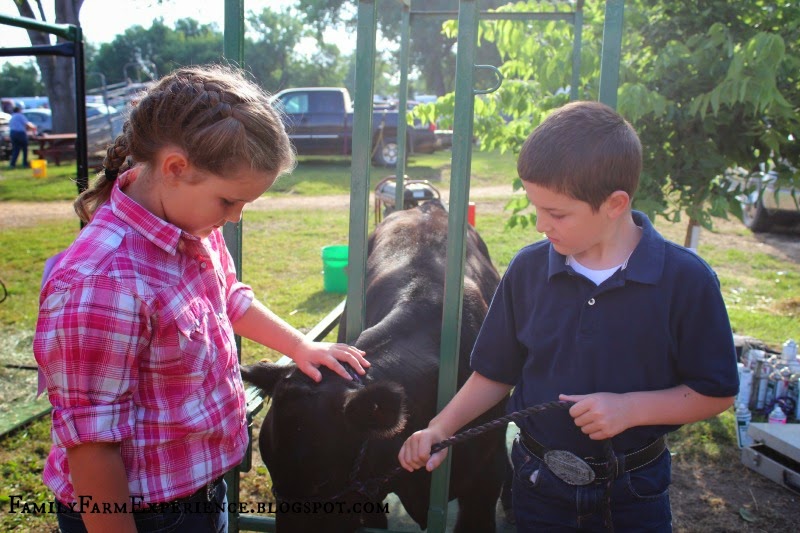I am here today to share with you one of the oldest and best recipes my mother and I use for canning. I love this tomato soup and I'm sure that after you try it you will too. Now I have to warn you that this is an recipe for a big batch of soup. One batch will make you about 20 quarts of soup, but if you can like we do you will still have to double or triple the batch each time you make it.
The first step of this soup is to head out to the garden, with your helper, and see how many tomatoes you have to work with for the day. My tomatoes are just starting to get into full production and I got just over 1 and a half 5 gallon pails. I do my canning with my mother and on this day she picked just under 1.5 pails so that gave us a grand total of 3 5 gallon pails of tomatoes. Looks like we will be doing a triple batch of tomato soup today. Lets get started.
Here is the recipe. It is an oldie but goodie that originates from my grandmother who is 95 years old overhearing it on the telephone. The story goes that a group of neighbors would share the same phone line and you would know the call was for you by the number of rings when the call came in. My grandmother had heard that the neighbor was getting a good tomato soup recipe so she listened in on that neighbors call and wrote it down. The original recipe called for 2 pecks of tomatoes or a 1/2 bushel but we find a 5 gallon pail easier to measure with.
After the tomatoes are picked take them in the house and clean them and cut out the tops and any bad spots. Place them in a big pot and cook them until they become juice. Cut up the vegetables and place them in a pot with some tomatoes on the bottom for moisture. Make sure to stir to keep it from burning on the bottom. I have learned that it is worth investing in a good thick pot because thin ones will burn easily and ruin the whole batch. Cook the vegetables until they too are soft and easy to juice.
We put the tomatoes and vegetables though a blender prior to juicing then through the colander. This leaves very little waste and makes the process of making juice easier. Here you can see me and my sister Nancy doing this. It is fun to work with family and we enjoy visiting while we work making good food for our family. As you can also see we have a very big pan to mix everything in. It is important that at some point you are able to get all the tomato and vegetable juice into one container so that you can ensure one batch of soup won't have more vegetables in it than another. When doing a triple batch this can be tricky and it calls for big containers.
We have a habit that when we can we fill things to the very top. The big pan was able to hold our triple batch of tomato and vegetable juice and no more. We gave it a good stir and then divided it into three big pots and placed it on the stove to start heating.
The recipe says to add salt, baking soda, and a flour/butter mixture at this point. The soda when added makes the soup foam as it neutralizes the acid in the tomatoes. It is cool to watch like a science experiment. The flour and butter you make into a paste, like pictured above, and mix into the soup. Now you need to heat the soup to a boil and keep stirring to keep form buring on the bottom. Once boiling add the brown sugar and then when the soup is at a rolling boil it is time to place it in jars.
This soup is canned boiling so there is no need for processing later. The jars will seal on their own when they cool. Some tricks to canning this way is to make sure the soup is in a rolling boil and have your jars sitting in hot water. If the jars are cold they might crack when the hot soup is put in them. We find that a cake pan with hot water serves the purpose. Fill the jars up to about a 1/4 inch from the top and place on a lid and ring and let cool. And there you have it delicious home made tomato soup.
Luke, my youngest, couldn't wait to try the soup and every time he put some in his mouth he said "Yum-yum". I'm so glad we can make this good food for him and making it with produce from the garden is such a wonderful gift.
Discloser: My family has been making this soup for years with no problems but I can not ensure that your process is the same as mine. If you have any concerns with this recipe please adjust it to suit your needs.









































































